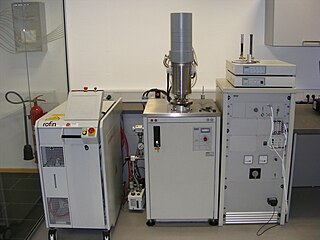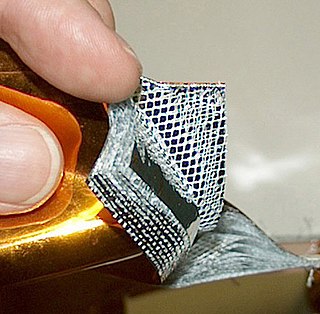 W
WThermal paste is a thermally conductive chemical compound, which is commonly used as an interface between heat sinks and heat sources such as high-power semiconductor devices. The main role of thermal paste is to eliminate air gaps or spaces from the interface area in order to maximize heat transfer and dissipation. Thermal paste is an example of a thermal interface material.
 W
WIn mathematics and physics, the heat equation is a certain partial differential equation. Solutions of the heat equation are sometimes known as caloric functions. The theory of the heat equation was first developed by Joseph Fourier in 1822 for the purpose of modeling how a quantity such as heat diffuses through a given region.
 W
WHeat flux measurements of thermal insulation are applied in laboratory and industrial environments to obtain reference or in-situ measurements of the thermal properties of an insulation material. Thermal insulation is tested using nondestructive testing techniques relying on heat flux sensors. Procedures and requirements for in-situ measurements are standardized in ASTM C1041 standard: "Standard Practice for In-Situ Measurements of Heat Flux in Industrial Thermal Insulation Using Heat Flux Transducers".
 W
WIn the mathematical study of heat conduction and diffusion, a heat kernel is the fundamental solution to the heat equation on a specified domain with appropriate boundary conditions. It is also one of the main tools in the study of the spectrum of the Laplace operator, and is thus of some auxiliary importance throughout mathematical physics. The heat kernel represents the evolution of temperature in a region whose boundary is held fixed at a particular temperature, such that an initial unit of heat energy is placed at a point at time t = 0.
 W
WA heat pipe is a heat-transfer device that combines the principles of both thermal conductivity and phase transition to effectively transfer heat between two solid interfaces.
 W
WThe laser flash analysis or laser flash method is used to measure thermal diffusivity of a variety of different materials. An energy pulse heats one side of a plane-parallel sample and the resulting time dependent temperature rise on the backside due to the energy input is detected. The higher the thermal diffusivity of the sample, the faster the energy reaches the backside. A state-of-the-art laser flash apparatus (LFA) to measure thermal diffusivity over a broad temperature range, is shown on the right hand side.
 W
WThe lumped-element model simplifies the description of the behaviour of spatially distributed physical systems into a topology consisting of discrete entities that approximate the behaviour of the distributed system under certain assumptions. It is useful in electrical systems, mechanical multibody systems, heat transfer, acoustics, etc.
 W
WMulti-layer insulation (MLI) is thermal insulation composed of multiple layers of thin sheets and is often used on spacecraft and Cryogenics. Also referred to as superinsulation, MLI is one of the main items of the spacecraft thermal design, primarily intended to reduce heat loss by thermal radiation. In its basic form, it does not appreciably insulate against other thermal losses such as heat conduction or convection. It is therefore commonly used on satellites and other applications in vacuum where conduction and convection are much less significant and radiation dominates. MLI gives many satellites and other space probes the appearance of being covered with gold foil which is the effect of the amber-coloured Kapton layer deposited over the silver Aluminized mylar.
 W
WIn thermodynamics, the thermal effusivity, thermal inertia or thermal responsivity of a material is defined as the square root of the product of the material's thermal conductivity and its volumetric heat capacity.